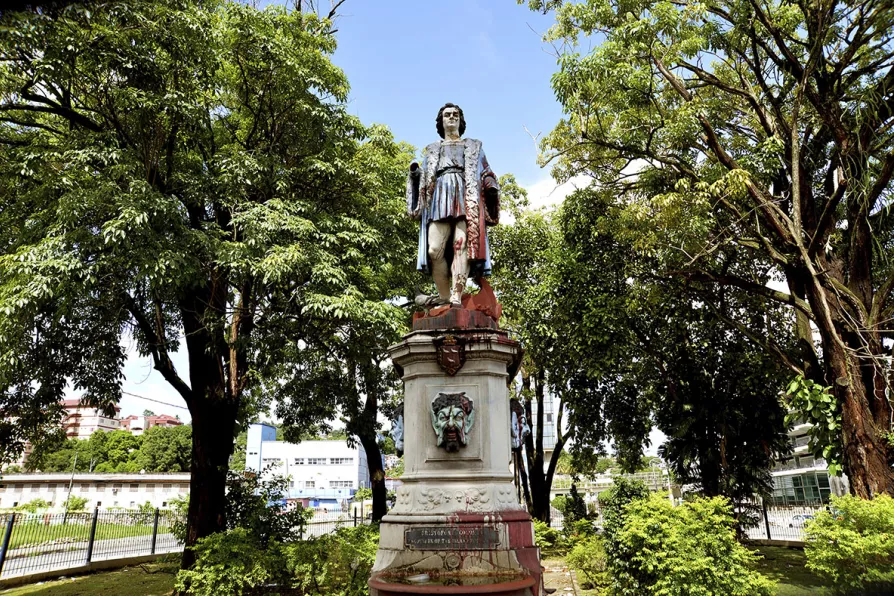Trinidad & Tobago citizens debate what to do with statues of Columbus and other colonial-era figures

 A vandalised statue of Christopher Columbus towers over Columbus Square in Port of Spain, Trinidad and Tobago, August 28, 2024
A vandalised statue of Christopher Columbus towers over Columbus Square in Port of Spain, Trinidad and Tobago, August 28, 2024
CHRISTOPHER COLUMBUS and other colonial-era figures came under scrutiny in Trinidad and Tobago during a lengthy debate in the capital on Wednesday.
The government had asked residents of the twin-island Caribbean nation if they supported the removal of statues, signs and monuments with colonial ties and if so, how those spaces should be used.
One by one, people of African, European and Indigenous descent stepped up to the microphone and responded.
Similar stories

On the anniversary of the implementation of the 1833 Slavery Abolition Act, ROGER McKENZIE warns that the legacy of black enslavement still looms in the Caribbean and beyond

MICHAL BONCZA draws attention to the problematic position that statues of historical figures have in our public spaces

ROGER McKENZIE recommends an exhibition that explores the colonial plunder hidden in the collection, and the questions it raises










